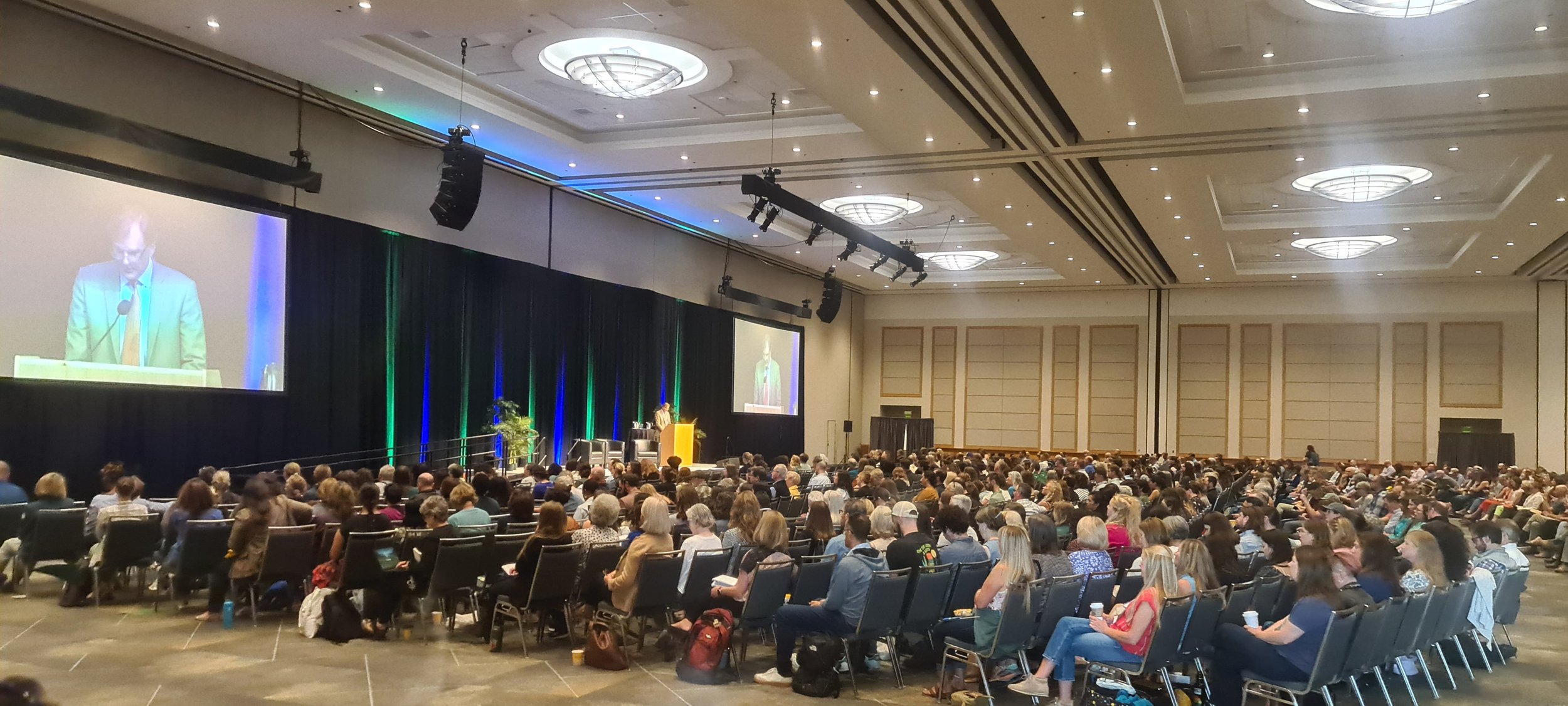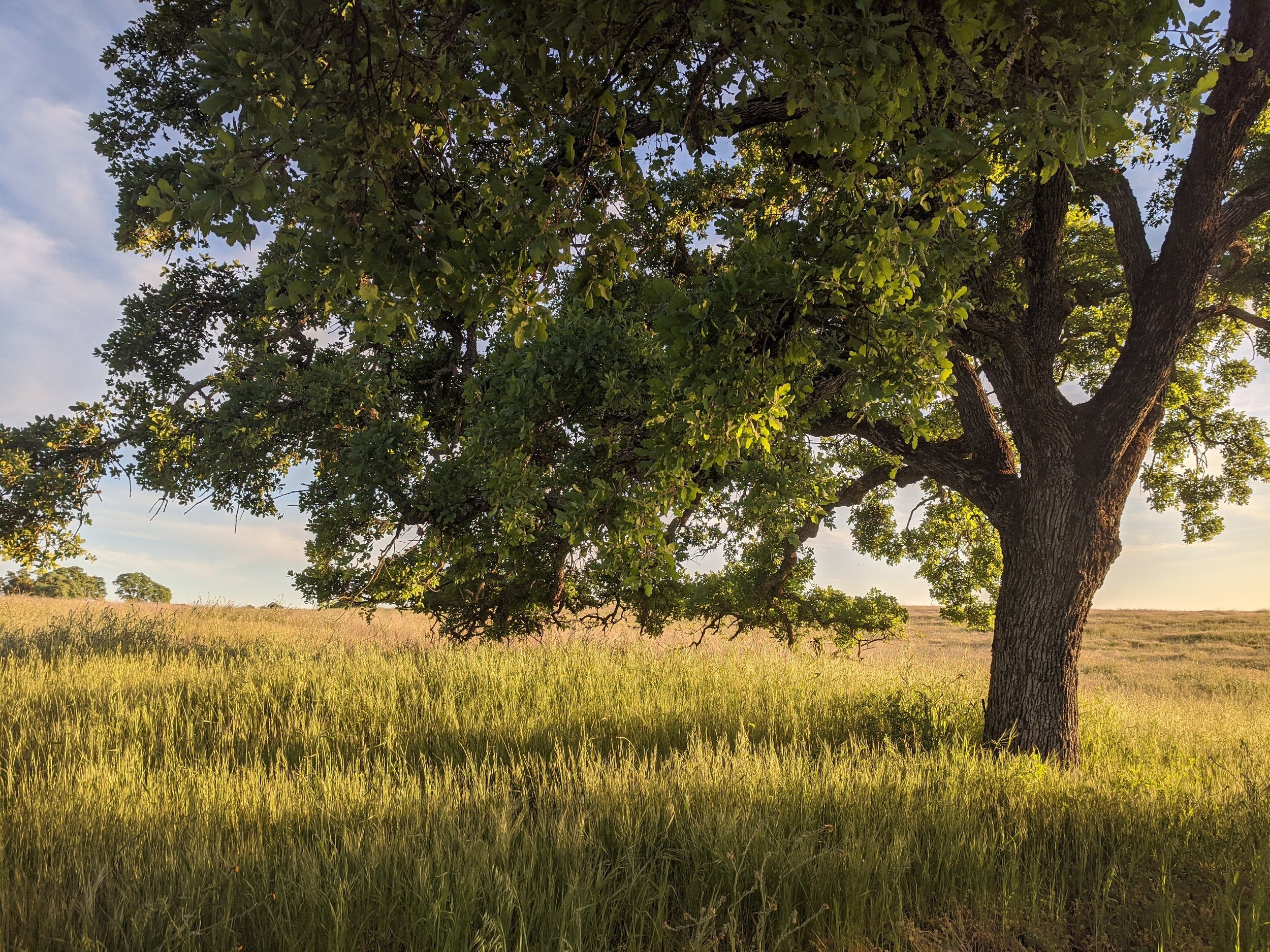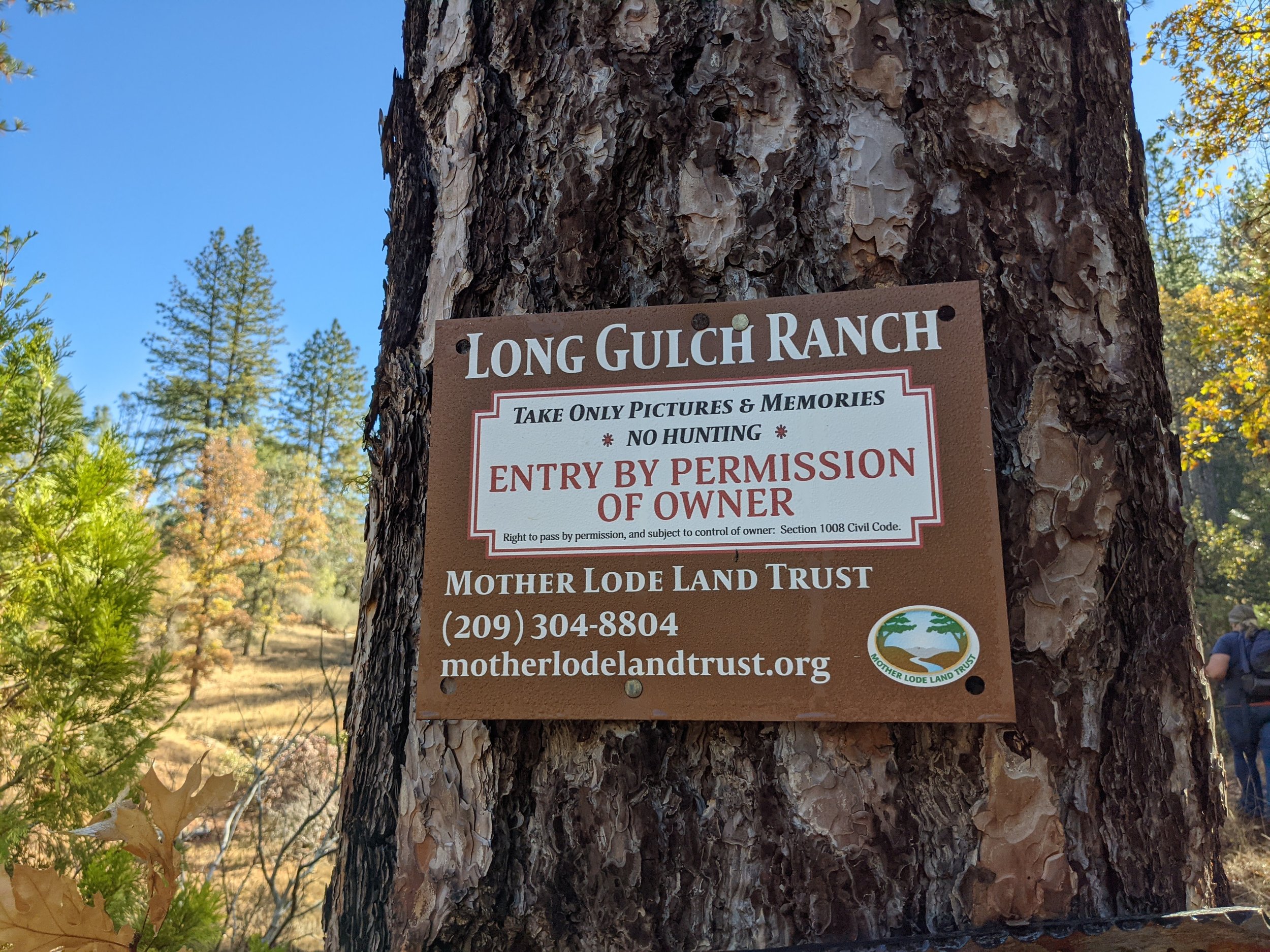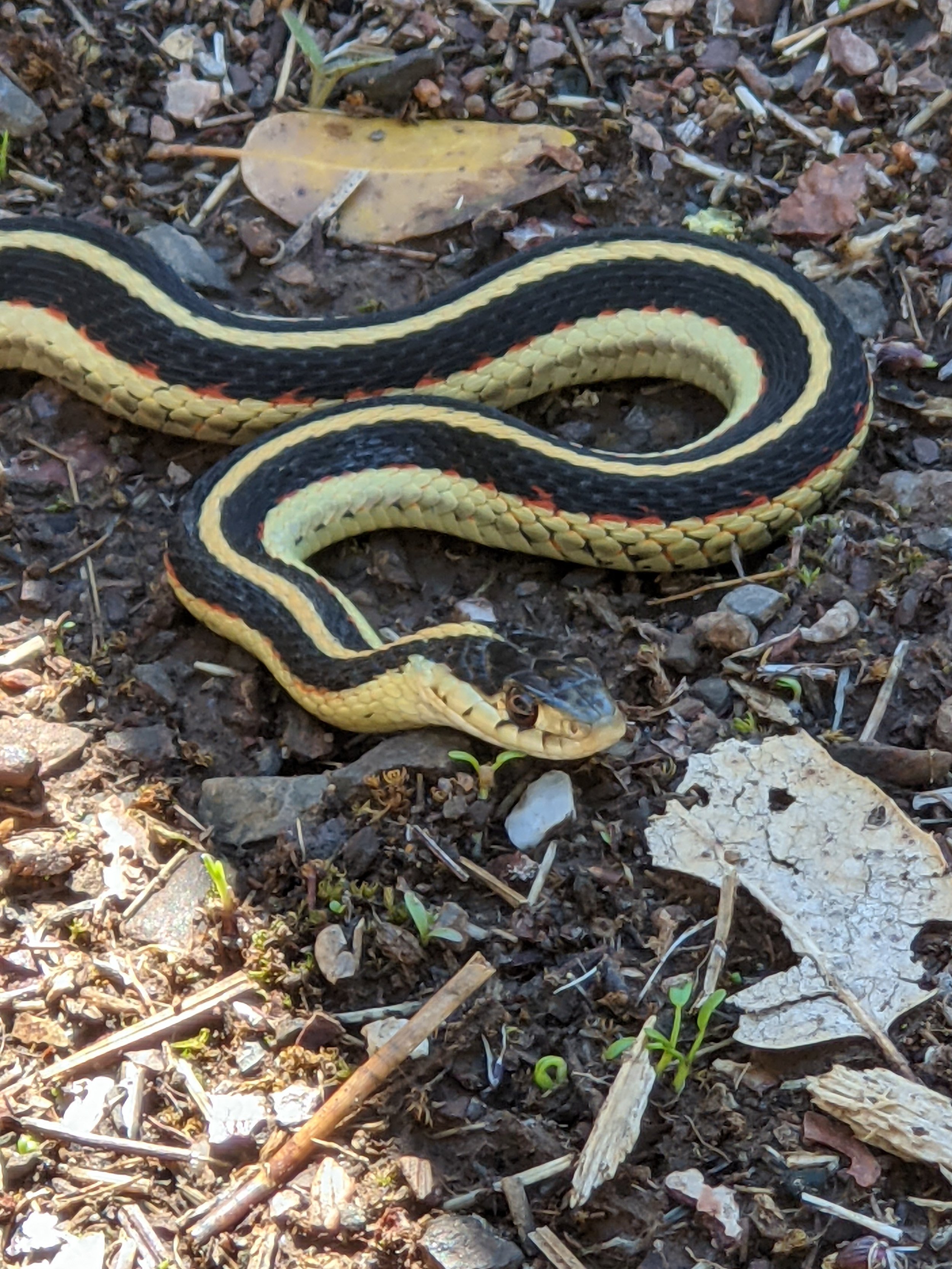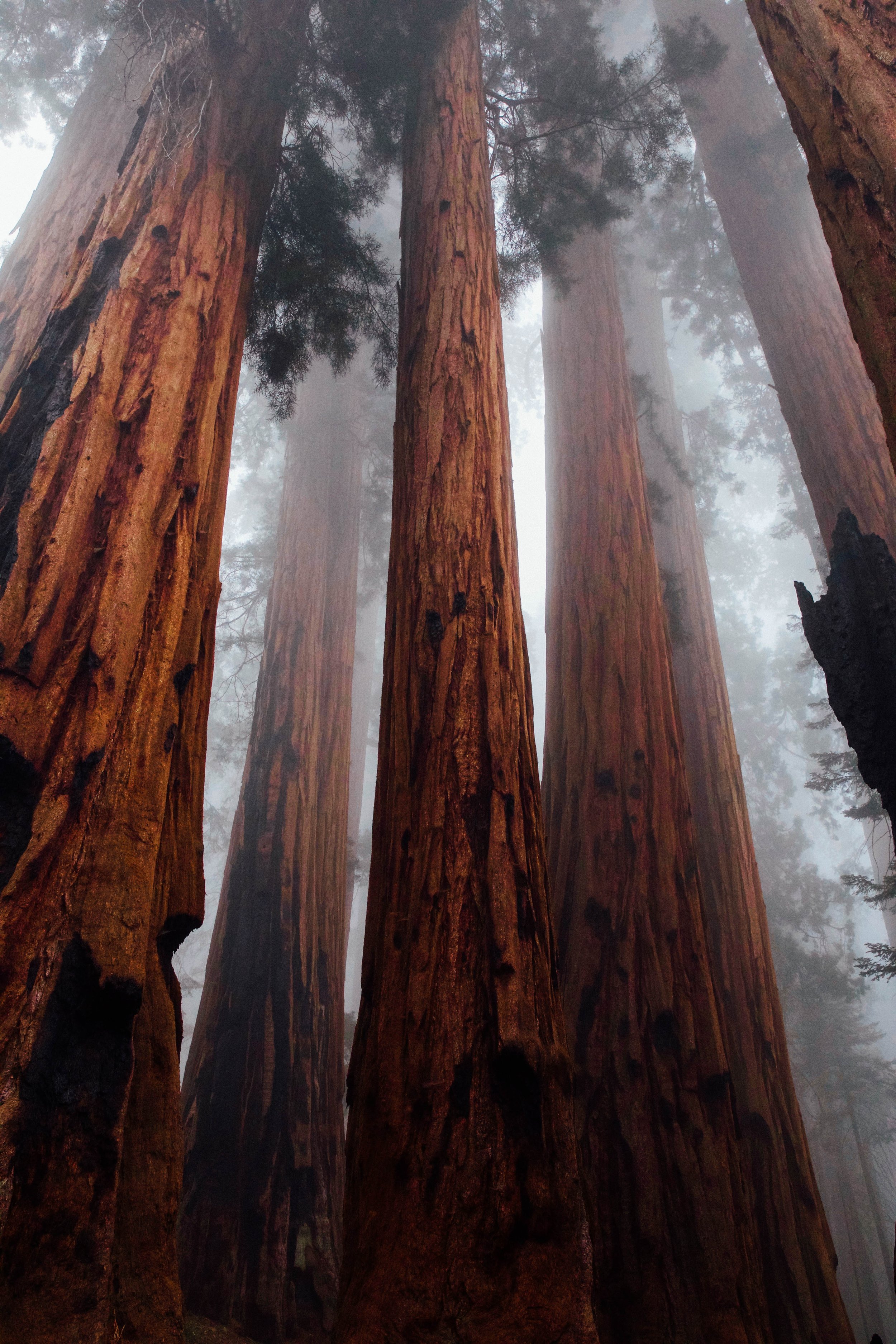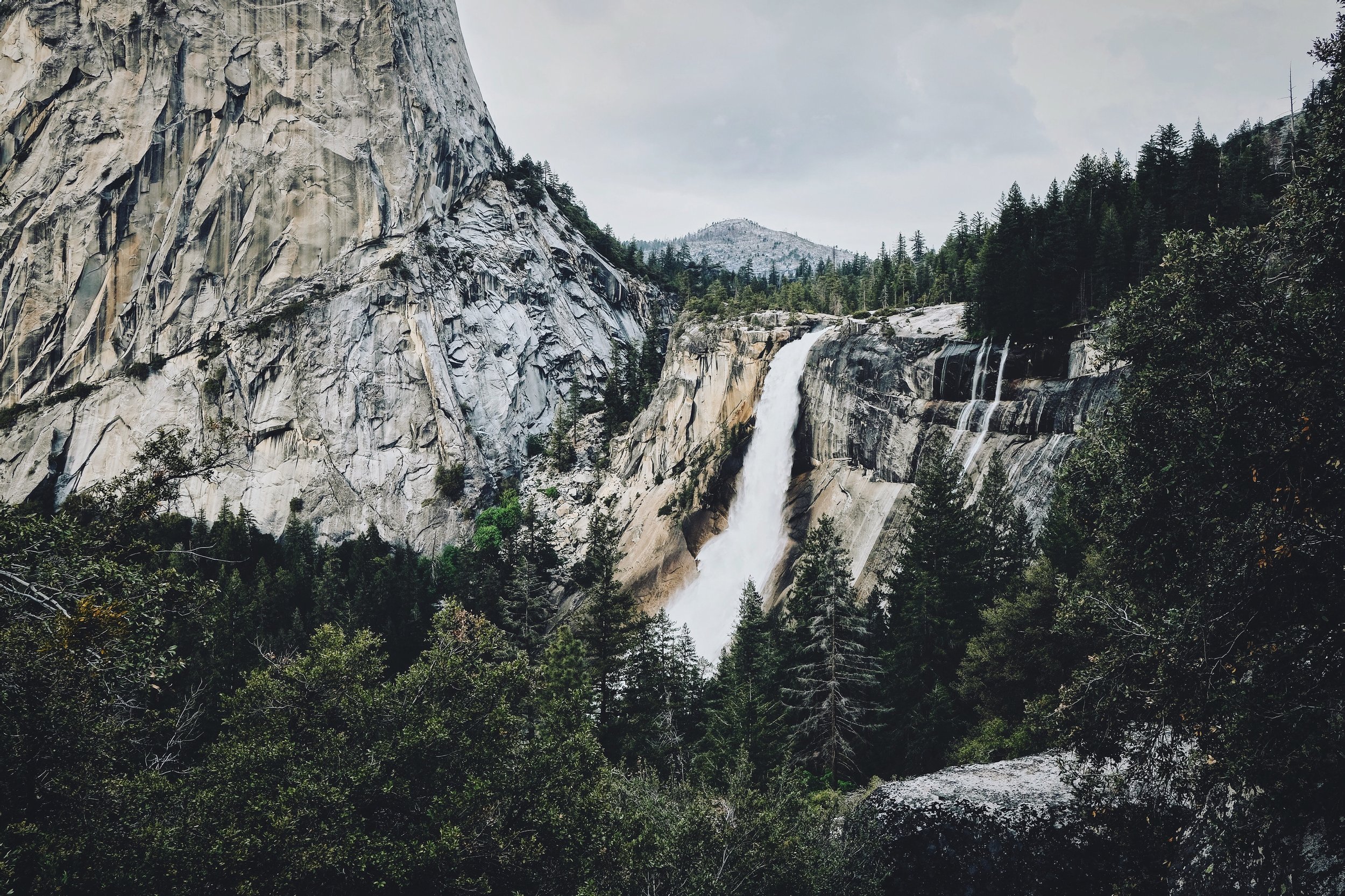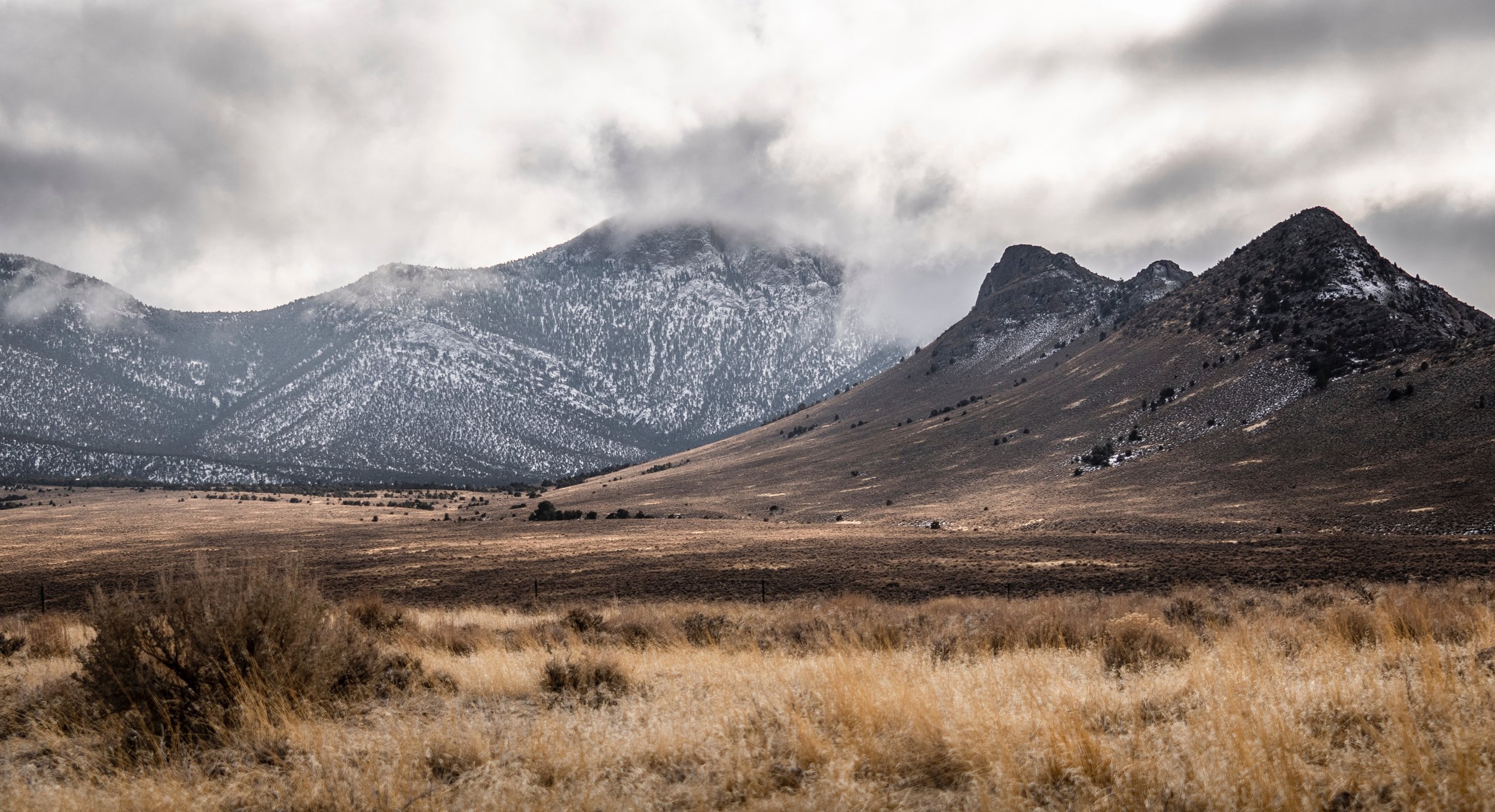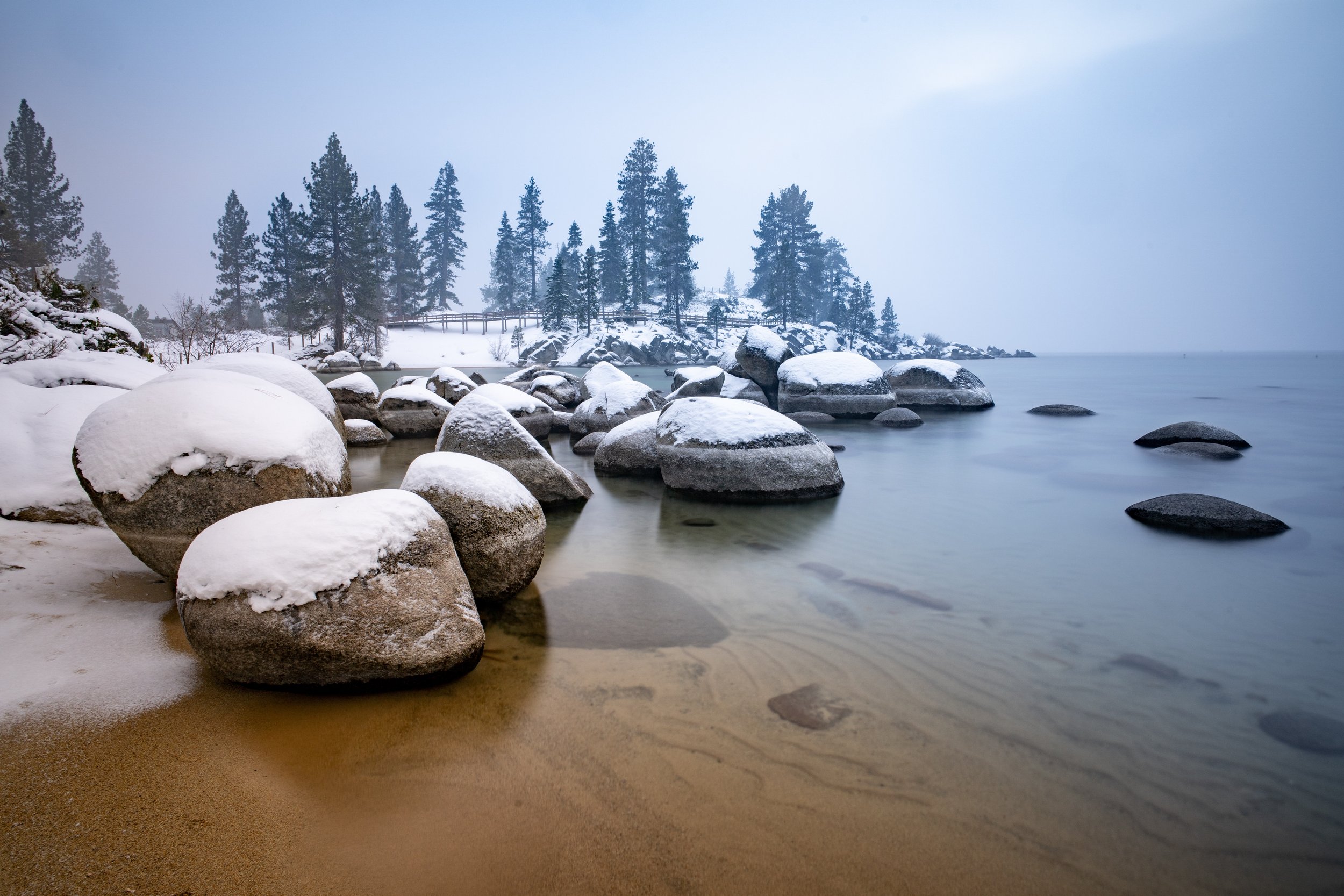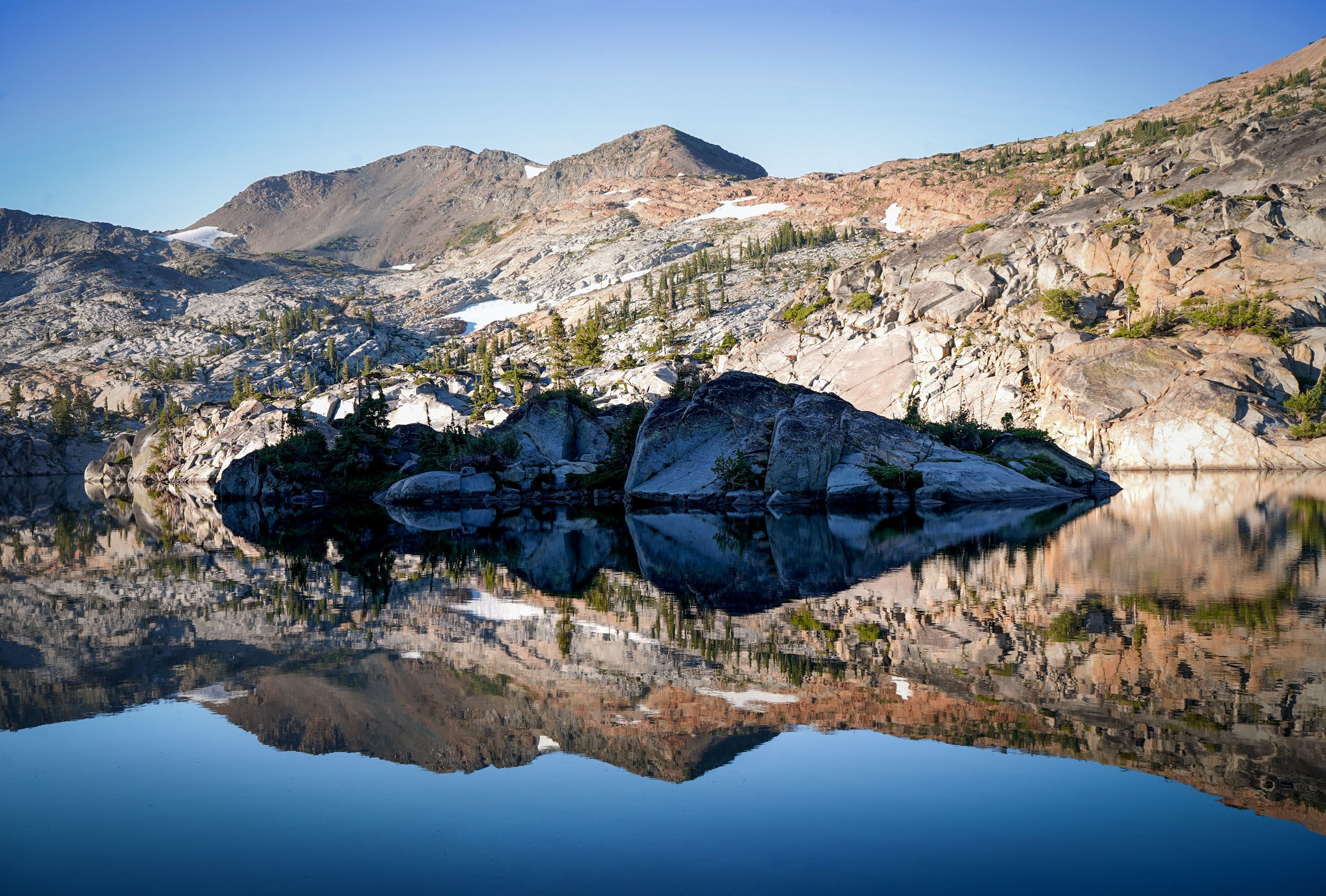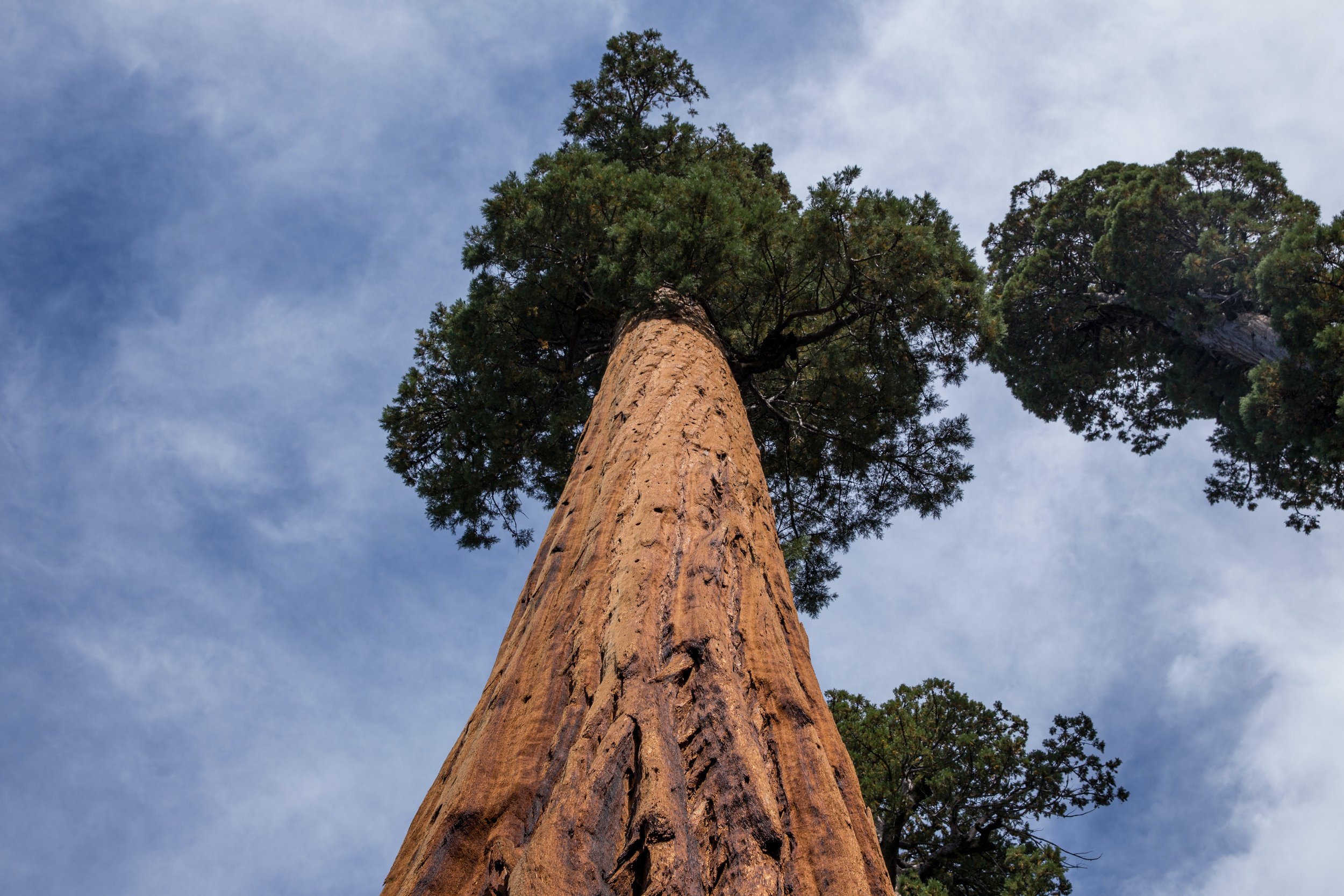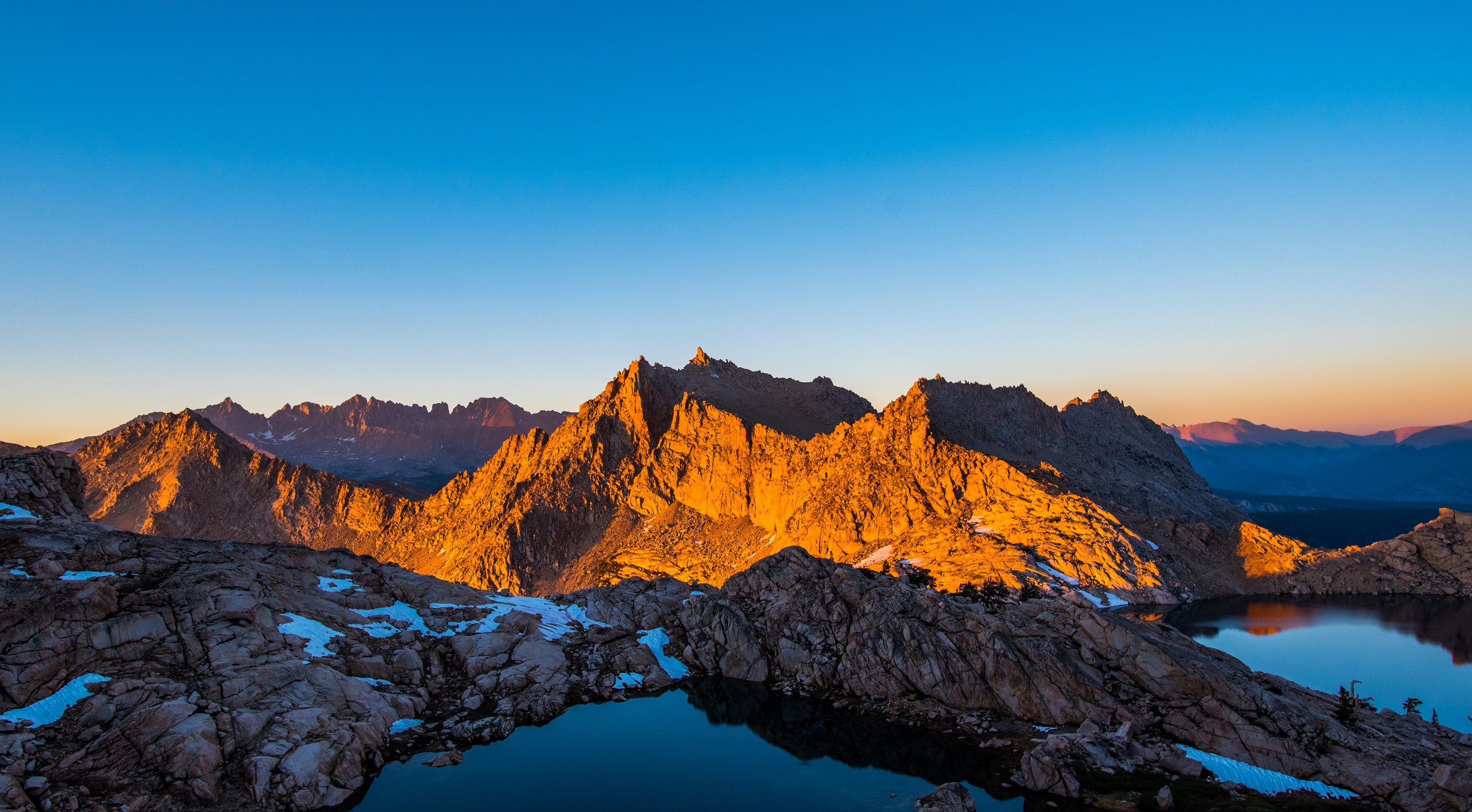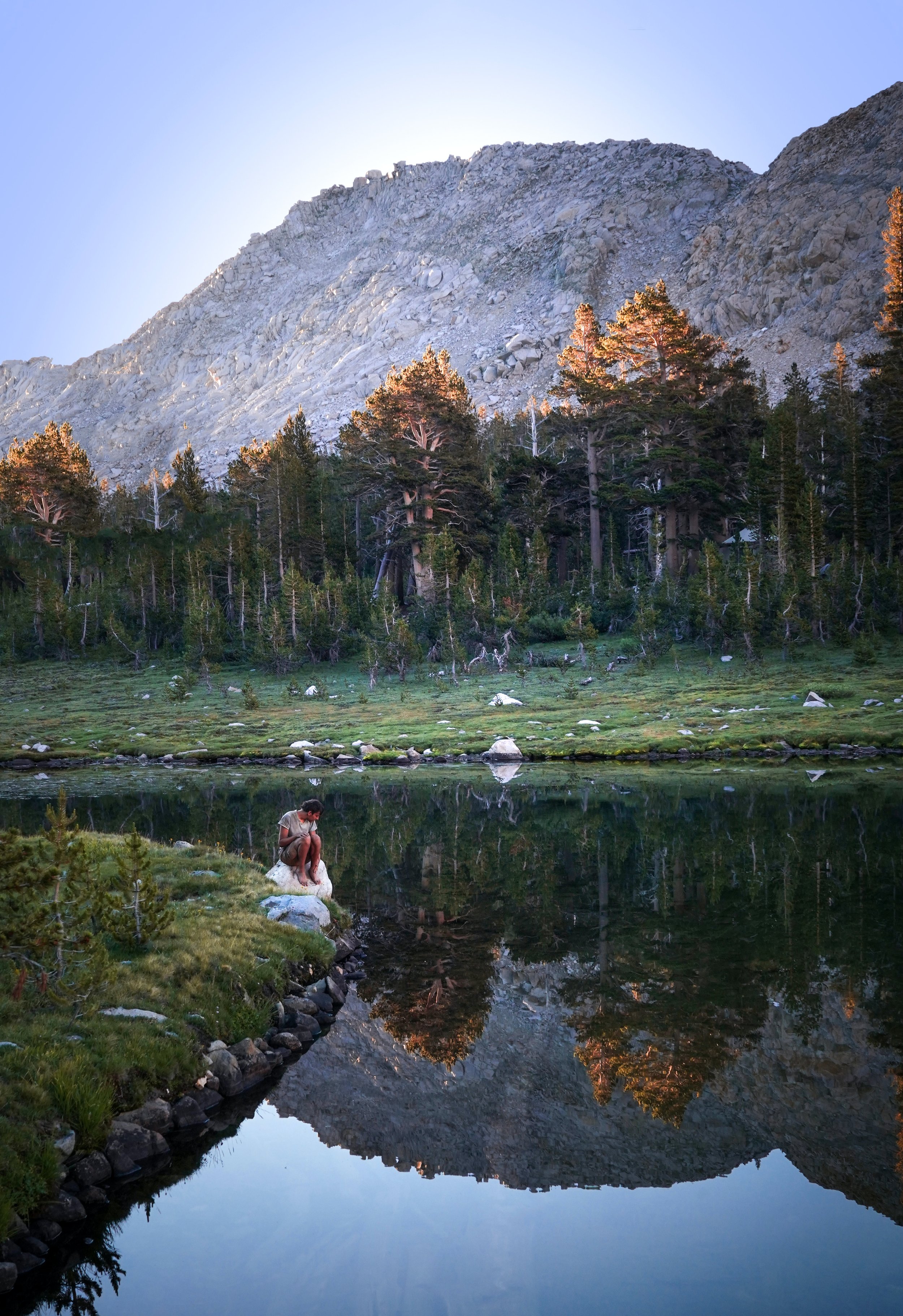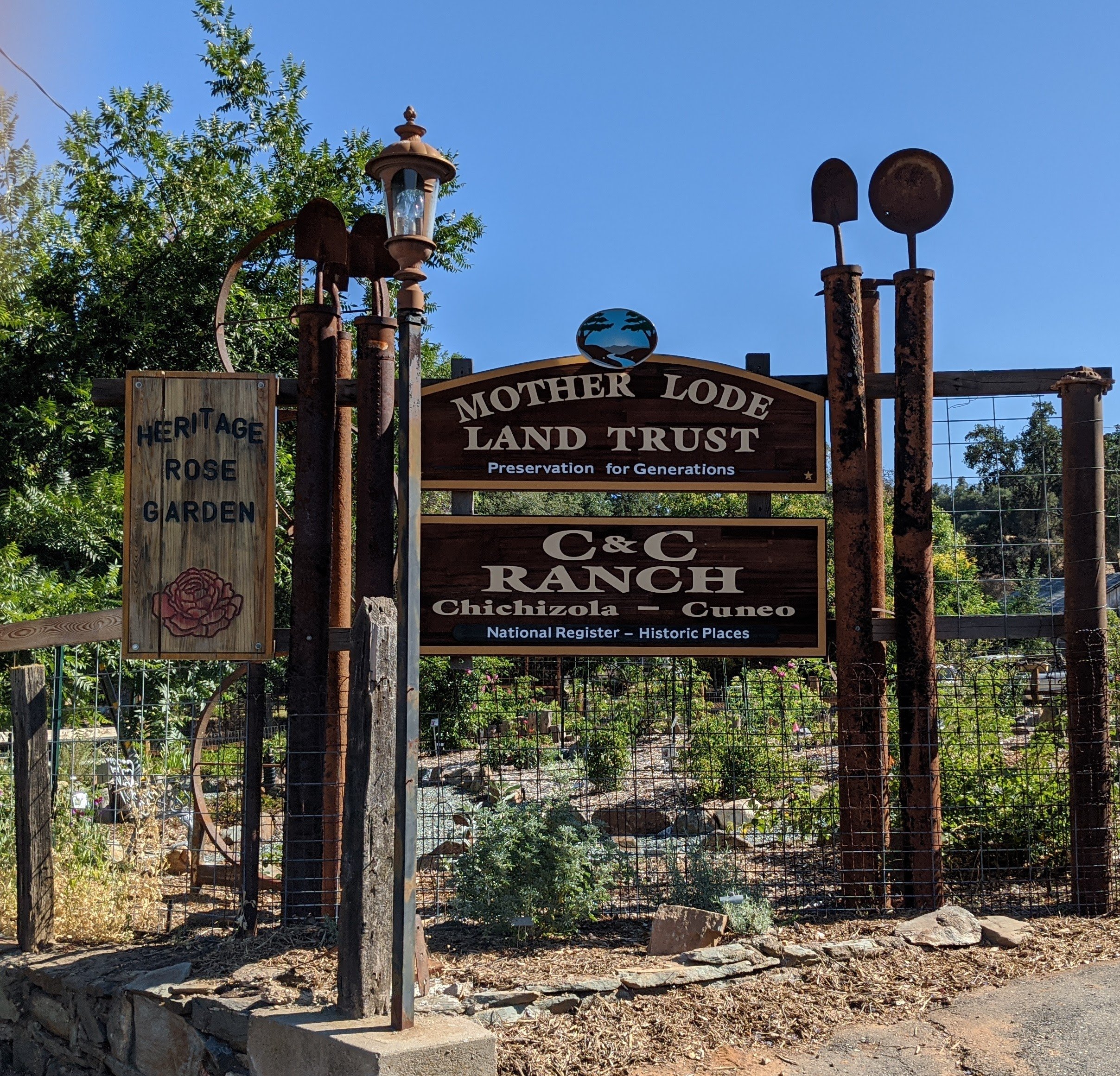
Mother Lode Land Trust News
Funding Opportunities Available to Assist with Private Land Conservation
Your local land trust, the Mother Lode Land Trust recently received a grant to provide outreach and education to landowners in our service area who are interested in the financial benefits of conserving their land. Farmers and Ranchers and those who purchase land for protection are the true conservationists. As you drive our rural roads, it is those people we should think of to thank for preserving our rural character. It’s about time that funding has been made available to incentivize these conservationists for the work they already do.
For the past several years, the Mother Lode Land Trust (MLLT), has been securing funding to purchase conservation easements on private land. A conservation easement is a voluntary yet legally binding agreement between the Land Trust and the Landowner that typically restricts subdivision and development or other uses that could affect the agricultural viability and/or natural resources of a property, in perpetuity. Landowners can donate these development rights for certain tax incentives, or they can sell their development rights to MLLT. The value of a conservation easement can be around 40-60% of the fair market value of the property. MLLT also purchases and/or accepts donations of title to land for public access, wildlife preservation, watershed health, and outdoor education.
Probably the greatest benefit to working with MLLT is the assurance that your legacy will be conserved in perpetuity. You can still sell your property or pass it on to your heirs, but the conservation easement remains forever, guiding how your property is managed long after ownership has changed.
There are currently several State and Federal grant programs to help MLLT fund the purchase of a conservation easement. Between State Cap and Trade revenues and bond sales and theFederal Farm Bill there are millions of dollars available for conservation. MLLT is hosting several community workshops in our region, the first of which will be on September 27 th at the Jamestown Community Hall at 6pm. Visit our website to learn more about our workshops or give us a call. We’d love to hear from you. www.motherlodelandtrust.org or (209) 304-8804
If you are interested in learning more about our programs and how we can work together, or if you just want to learn more about MLLT and how you can become a partner in conservation, please consider joining us for this event. Our goals are twofold: Generate a list of interested landowners so we can have projects ready when funding opens up; and gather input from the community about what’s important for you to see protected.
This landowner outreach is funded by a grant from the Strategic Growth Council’s Sustainable Agricultural Lands Conservation (SALC) program. SALC is part of California Climate Investments, a statewide program that puts billions of Cap-and-Trade dollars to work reducing greenhouse gas emissions, strengthening the economy and improving public health and the environment – particularly in disadvantaged communities.This capacity-building grant enables MLLT to develop and prepare for conservation projects at the pace and scale required to meet the State’s goal of conserving 30% of California’s land by 2030.
The Mother Lode Land Trust (MLLT) was established in 1990 by a coalition of ranchers, conservationists, and other concerned citizens to help protect foothill lands from the pressures of urbanization and development. MLLT serves Tuolumne County as well as Alpine, Amador, Calaveras, and El Dorado Counties. MLLT holds conservation easements totaling just over 11,000 acres, and owns 6 preserves totaling 1,300 acres, including the Bennett Juniper Tree near Eagle Meadow, and Long Gulch Ranch near Groveland. MLLT's mission is to protect the agricultural and natural landscapes and historic character of the Mother Lode and Central Sierraregion for the benefit of present and future generations. For more information, visit https://motherlodelandtrust.org/ or follow MLLT on Facebook.
Rally
Flying into Portland you are immediately struck with the sense of beauty, the river, forest and mountains are all clearly visible. From the airport lobby you have a striking view of Mt. Hood's magnificent peak and from the hotel I could see Mt. St. Helens and visualize what it looked like a few decades ago before the big blast! The hotel is right next to the clean and efficient public transportation system, which can take you anywhere in the city for a reasonable price. I had a little time to explore, so I went to Powell's City of Books Store, the largest Independent bookstore I’ve ever visited!
Of course, being a city, Portland also has its fair share of homeless people and traffic jams, which are a reminder that there are still many good causes to work for, even here in Portland.
The reason I’m here is to help stop our land from being lost to development. As a report from the American Farmland Report states–"More than 31 million acres of U.S. agricultural land have been irrevocably lost to urban expansion since 1982 and an additional 175 acres of farm and ranchland are lost every hour to make way for housing and other industries.(American Farmland Trust, 2018")
After checking into my hotel, I headed to the conference center for the the Land Trust Alliance annual conference. Being the first time I'd traveled out of state since before Covid, I was astonished by the amount of people who were attending this event. Over 2,000 people from land trusts all over the United States had packed into a sizable conference room.
This is probably the golden age of the land trust movement. There are more people, organizations and money available to conserve land than ever before. There is also an astounding amount of bipartisanship consensus when it comes to land conservation. In one of the workshops offered they discussed recent polling data that showed even a majority of both major political parties support land conservation.
"Land trusts have already conserved 61 million acres of private land across the nation — more than all of the national parks combined. Help us conserve another 60 million acres by the end of the decade." (Land Trust Alliance 2023)
Now, the trick for our local, very small Mother Lode Land Trust, is how to navigate the bureaucracy and direct that money toward our tiny but critical corner of the world. Luckily, there were workshops to help with just that, especially in learning to understand the federal funding process. With the most recent Farm Bill being negotiated there is a good chance we could have 60 billion available nationwide for conservation. So hopefully our experience at this conference will help us funnel that money to our home turf.
The conference had so many workshops that I couldn't attend them all, let alone write about all of them. It was like trying to drink from a fire hose. The three day event was broken up into multiple tracts which each held multiple options. Here is just the list of the broad subjects; Addressing Climate Change, Managing Easements, Communicating Successfully, Conserving Working Lands, Doing Deals, Federal Funding, Managing Your Organization, Stewardship and Securing Support.
I or another of my colleagues will write a follow-up blog about some of the more interesting and educational events attended. But overall, I left Portland feeling hopeful about humanity and the wild world. If we can find some common ground and take action to save land, then maybe we can solve even bigger problems like the climate crisis.
Rally for the land
I started working with the Mother Lode Land Trust during the pandemic, when having easy access to fresh air was even more urgent than usual. I've learned a ton about the importance of land conservation in the past few years. I'm so excited that I'm going to be able to attend the Land Trust Alliance's annual conference in Portland, Oregon! The conference is nicknamed Rally, and this year will be the 36th annual conference. I can't wait to meet other land conservationists and learn more about the latest trends in the field.
Even the abstract numbers are impressive, but when you think about the real-world places that have been conserved and protected by land trusts, it's astounding. These places are farms, ranches, neighborhood parks, and wild vistas that are home to endangered species like butterflies and mountain lions. These millions of acres benefit people and animals every day, and they help make up the backbone of our communities and conservation areas.
This year's Rally is packed with workshops and events aimed at increasing the scale and rate of land conservation. The workshops cover everything from advanced fundraising techniques to discussions about state-of-the-art mapping processes. But, for me, the best thing about events like this is the networking opportunities. The chance to shake hands (or fist bump) with people from around the country who are working to expand protected lands. Hopefully, after the event, people from LA, Texas, or Kansas will remember meeting members of the Mother Lode Land Trust team. Ideally, this will be just the beginning of a relationship that will help bring more attention and more funding to our shared goal of saving land for future generations.
Butterflies and pollinators
Supporting Pollinators at C&C Ranch
Amador County Library, Amador County Master Gardeners, and the Mother Lode Land Trust hosted a successful Butterflies & Pollinators event on July 20th at the C&C Ranch in Jackson, CA. More than 40 participants of all ages learned about plants that support our local butterflies and planted their own mini-butterfly garden to take home.
The mini gardens are ready to take home and attract pollinators.
The California State Library generously funded this project, which included planting milkweed to support a 70-mile flyway corridor for monarch butterflies in El Dorado and Amador Counties. Mother Lode Land Trust is proud to have C&C Ranch be home to one of the flyway’s Monarch Waystations. To learn about this amazing project, visit Sierra Monarch Rescue’s website: https://sierramonarchrescue.com.
Master Gardeners ready to help participants plant their mini pollinator gardens.
Our next event, Compost & Worm Bins, will be at C&C Ranch will be on August 17th at 9:00 AM. Participants will learn how to turn waste into garden gold with vermiculture. Master Gardeners will teach what type of worms are needed, how to harvest the compost, and how to set up a worm bin. Participants will build a small worm compost system to take home. Call 209-223-6400 or stop by the Jackson Library to RSVP.
Narrow leaf milkweed gets established at the Amador Community Garden for habitat enhancement
projects.
mllt hosted bike club
Last week, MLLT hosted the Amador Mountain Bike Club's (AMBC) first ever skills clinic at our C & C ranch in Jackson. AMBC, with help from Amador Trail Stewardship and its group of volunteers, built a small track for training, and some temporary obstacles for learning.
Photo By Bradley Booker
The clinic hosted 22 youth riders on site for 3 days, with a ranch ride and BBQ dinner to close out the mini camp. There will be another mini camp this fall, be sure to follow the group for more information.
The youth teams will continue to practice on the track and take rides on the ranch and trails in the county throuhgout the year.
If you or someone you know is interested in the youth cycling league, please visit www.AmadorTrailStewardship.org for more info.
We love offering land for public use and to further enhance our community. If you are interested in hosting an event at one of our poperties, please conatct us for details.
Partner Spotlight: Heritage Rose Garden
The Heritage Rose Garden is visited by the neighbor cat, Vinny.
Partner Spotlight: Heritage Rose Garden
Have you visited the Heritage Rose Garden (HRG) yet? This unique garden was created by Master Gardeners of Amador County, and is located at the C&C Ranch, an MLLT conserved property in Jackson. Here you will find a distinctive mix of old roses, California native plants, and heirloom plants that show visitors what can be achieved in their own gardens.
The HRG was established to fill an unmet need. Judy and Bob Dean’s extensive collection of heritage roses, many gathered from Mother Lode sites, came close to being destroyed by the Butte fire of 2015. Bob Dean approached the Master Gardeners with the idea of a “back-up” garden, accessible to the public so future generations can see the roses and learn their culture and history. These roses, many gathered from local pioneer cemeteries, old homesteads, and mining camps, are survivors, resisting drought, physical disturbances, neglect, and abuse. Along with California natives and other heirloom plants, they provide a living example of plants suited to the challenges of climate change and limited resources.
This mini-China rose was brought to California by covered wagon by Jesse Burns and Catherine Abbott in 1857. Catherine brought the rose with her from her family’s home in Arkansas before settling in Calaveras County.
The Master Gardeners now educate the public about these forgotten beauties while promoting sustainability and best gardening practices. The addition of natives and other pollinator plants makes the garden an even more effective teaching tool, by adding to biodiversity, sustainability, and year-round interest.
Narrow leaf milkweed is visited by a purple hairstreak butterfly at the Heritage Rose Garden.
Since opening in 2019, the HRG significantly expanded outreach by providing a space for classes, workshops, demonstrations, and open garden days. These totaled 24 in the last two years. In 2022, the garden had 841 visitors, and volunteers logged 2,122 hours. Master Gardeners offered classes on pollinators, pruning, pest management and natives. Attendees take away knowledge of declining pollinator populations, water conservation and soil health.
Interpretive tools were created to enhance the visitor experience. A hand constructed kiosk welcomes garden visitors at the entrance. Volunteers ensure that each plant is clearly labeled. A color brochure is available highlighting the history of each rose which enables visitors to tour the garden at their own pace. In addition to the print brochure, local high-school students created a narrated digital version as a mobile phone app to incorporate technology and enhance accessibility. A local Sacramento news station featured the garden on one of its episodes.
Many heritage roses are found abandoned on old homesites like this. Both yellow and white versions of the ‘Lady Banks’ rose are on display at the Heritage Rose Garden.
Each heritage rose has a story to tell. A rose in the Amador City Cemetery was weed-whacked to the ground after volunteers successfully cloned it. Two still unidentified old roses were saved from an old homestead property in Jackson as bulldozers arrived. Volunteers also received starts from a rose in Sutter Creek just before the owners doused it with weed killer. Now, with more than 70 heritage roses, other heirloom plants and numerous California natives, the community has a living piece of history to enjoy for years to come.
The garden is located at 1334 Jackson Gate Road in Jackson. Open garden days are every 3rd Saturday, from 8:30 AM to 10:30 AM from May through October. Volunteers will be on site to answer questions, give tours, and show off their projects.
Out and About With the Mother Lode Land Trust
In the last week of May a team of Mother Lode Land Trust representatives checked in on our Long Gulch Ranch Preserve in Tuolumne County near the scenic town of Groveland. The Long Gulch Ranch Preserve is 575 acres of mixed conifer and oak woodlands. Originally protected for Great Gray Owl habitat, this property is also open to the public and used by hikers, equestrians and mountain bike enthusiasts. Recently we received funding approval from the Sierra Nevada Conservancy, for half the money needed to acquire Phase II of the Long Gulch Ranch Preserve, an additional 303 acres that is adjacent to our existing protected property.
The Mother Lode Land Trust representatives visited the Long Gulch property on Wednesday, May 24, 2023. We walked the trails with members of the Groveland Trail Heads (A mountain bicycling club). We discussed potential recreational opportunities and the need for more trail maintenance. During this past winter we lost a lot of trees and many of these will need to be removed for better trail access. We have partnered with the Tuolumne County Resources Conservation District (RCD), and other community organizations to reduce the fuel load by removing many of these downed trees and brush. However, some of these trees may need to be removed prior to the beginning of this project.
We also met with Brian Fitzgerald, owner of the Long Gulch phase II parcels. Mr. Fitzgerald has been a very active partner throughout this conservation project. He has donated both significant time and money to help create the Long Gulch Ranch Preserve. During this site visit he showed maps of the property and discussed access issues with the equestrian center. We had good discussions with local equestrian center folks on how to improve access for trail riding on the existing and future Long Gulch Ranch Preserve.
We also discussed land management issues like illegal camping and firewood cutting with the Pine Mountain Lake representatives, the large subdivision bordering the property to the west. We plan to add additional signage to better demarcate the boundary and develop a local volunteer workgroup. MLLT agreed that additional recreational use is helpful as it means more people are monitoring the property.
We will be working in Tuolumne County in the following months as part of our outreach efforts to landowners, agencies, and agricultural organizations in Tuolumne County. Our first public workshop is scheduled for 6pm on October 18. We will be announcing the location and sending invitations in the following months, stay tuned.
MOTHER LODE LAND TRUST SEEKS CONTRACTOR
For Fencing Contractors,
The Mother Lode Land Trust (“MLLT”) is seeking bids to construct perimeter fencing around the Amador Community Farm’s community garden area. A grant through the Department of Conservation’s farmland improvement grant program has been secured to fund this project.
The Community Garden is a site on the 200-acre Historic Chichizola/Cuneo Ranch off Jackson Gate Rd. in Jackson CA. MLLT owns the property and has been thus far working with a grassroots, all volunteer group of people to develop the first phase of the community garden. This fencing project (Phase 2) will expand the garden, allowing more space to grow produce, provide a place for fieldtrips & classes, allow for the development of NRCS practices demonstration areas, and protect wetland and natural areas.
Project Specifics:
Start date: Anytime
Completion date: No later than 12/31/2023
Linear feet of fencing: 1345 +/-
Acreage: 4
Fence Height: 8’
Materials: Two 4’ sections of field fence, t-posts, some barbed wire (contractor recommendations will also be considered)
Gates: one 16’ & one 8’
Terrain/condition: flat to rolling hills, one drainage. Some heritage oaks in the fence line. Some downed trees along existing fence. Accessible by vehicle. Cattle on adjacent properties.
Contractors interested in submitting a bid should reach out to the Mother Lode Land Trust to set up a time to view the site. Bids must be in writing and you must be able to submit written invoices showing time, and materials for the grant reporting. Contractors must carry at least $1M in liability insurance.
For questions or to schedule a site visit, contact Ellie Routt.
ellie.motherlodelandtrust@gmail.com
c. 209-419-2861
SPRING CLEANING
As we clean up from this historic, wet, and snowy winter, our year has only just begun here at the Mother Lode Land Trust. We have already hosted several public events this year, despite the rain. Now, this beautiful Spring and the upcoming Earth Day have brought more opportunities for outings. At our newly acquired Erickson Ranch Preserve in Sutter Creek, we are co-sponsoring the Mother Lode Earth Day 5K race. This is a partnership with Amador Trail Stewardship and the Amador Highschool Environmental Club. We are thrilled to also co-sponsor another Earth Day event with the Tuolumne County Land Trust, a beautiful wildflower hike at Ratto Ranch near Sonora. Lastly, at our own C&C Ranch Preserve, we are holding our first annual Campfire Stories Event. This event will provide a unique story-telling and live music experience at the C&C ranch in Jackson. This is part of our work to get many more people out on the land and aware of our Land Trust work. As we work to get more access to the community, we are also working to help conserve more important working lands across our region.
One example of our most recent work is the above-mentioned, Erickson Ranch Preserve. This property was transferred to us from Caltrans as a mitigation property for the Sutter Creek bypass environmental impacts. One of our first challenges at Erickson Ranch was dealing with the debris left over from previous oak planting and other restoration projects that had been scattered across the property. Unfortunately, most of the planted oaks died, leaving a lot of plastic pipe, rebar, and fencing across the property. Luckily, with help from our volunteer force and our new Stewardship Director, Amanda Brashear, we have begun to clean up this property.
“Over 30 volunteers removed fencing, netting, rebar, irrigation pipe and other debris totaling 65 volunteer hours. They collected enough debris to fill a 40-yard dumpster! We truly appreciate our hard-working volunteers, and so will the future visitors of Erickson Ranch. Thank you. “
We have also been partnering with the Amador Trail Stewardship Group to help fix and restore the trails that have been developed there. It is wonderful to see this land being used by the public.
We are delighted to announce that we have received funding approval from the Sierra Nevada Conservancy to acquire an additional 303 acres near our existing 575-acre Long Gulch Ranch Preserve near Groveland, and although we still need to raise another $650,000 in funding, we are hopeful about making this project come alive. This land offers important Great Gray Owl habitat, magnificent valley oaks, and excellent recreational opportunities. Once slated for suburban development it will now be forever protected as open space.
In Calaveras County, we are in the final stages of securing a conservation easement on a historic working cattle ranch. In the coming months, we will begin doing extensive outreach in El Dorado through Tuolumne counties to let land owners and the public alike learn more about the great opportunities the Mother Lode Land Trust has to offer. If you are interested in helping with our current outreach project or any of our other programs, give us a call or shoot us an e-mail. As spring turns quickly to summer, we look forward to a very productive year of land conservation!
VIRTUAL FENCING
Scott Oneto & Brian Allen, UC Cooperative Extension
(Excerpted from UCCE article) Read the full article here.
Recent advances in virtual fence (VF) technology are rapidly providing cost-effective opportunities to revolutionize grazing management practices and livestock production systems. Virtual fencing, an alternative technology to traditional physical fencing, enables land managers to control livestock distribution across extensive landscapes without the intensive labor, expense, and logistical efforts required by traditional fencing. Livestock are outfitted with GPS collars (Figure 1) that communicate with radio towers to create a virtual fence, and if livestock cross manager- defined virtual boundaries, the collars deliver audible (e.g., series of short, high-pitched sounds) and/or tactile stimuli (e.g., electrical pulse). Previous research has demonstrated that both cattle and sheep can quickly learn virtual fencing cues, including responding to audio cues alone. This innovative technology has also been shown to be effective for multiple natural resource goals in grazed rangelands across the Great Plains and Great Basin in the United States and grazed pastures of Australia.
accreditation comments
Dear Stakeholders, Members, Supporters, and Friends,
The land trust accreditation program recognizes land conservation organizations that meet national quality standards for protecting important natural places and working lands forever. MOTHER LODE LAND TRUST is pleased to announce it is applying for accreditation renewal. A public comment period is now open.
The Land Trust Accreditation Commission, an independent program of the Land Trust Alliance, conducts an extensive review of each applicant’s policies and programs. “Land Trust Accreditation has really helped our organization maintain proper records and finances, and stay in good standing with the local Land Trust community.” (Ellie Routt, Executive Director)
The Commission invites public input and accepts signed, written comments on pending applications. Comments must relate to how MOTHER LODE LAND TRUST complies with national quality standards. These standards address the ethical and technical operation of a land trust. For the full list of standards see http://www.landtrustaccreditation.org/help-and-resources/indicator-practices.
To learn more about the accreditation program and to submit a comment, visit www.landtrustaccreditation.org, or email your comment to info@landtrustaccreditation.org. Comments may also be mailed to the Land Trust Accreditation Commission, Attn: Public Comments, 36 Phila Street, Suite 2, Saratoga Springs, NY 12866.
Comments on MOTHER LODE LAND TRUST’s application will be most useful by April 1st, 2023. You can also send comments or questions about our organization, directly to the Mother Lode Land Trust. Direct correspondence to PO Box 1435, Jackson CA 95642 or email ellie.motherlodelandtrust@gmail.com
We thank you for your interest and continued support.
Sincerely,
Ellie Routt
Executive Director
Land Trusts are the Answer
Land Trusts are the Answer
In the age of climate change California has become a leader in innovative ways to reduce our dependence on fossil fuels. California has also recognized the benefit of protecting biodiversity and working lands in the race to limit the catastrophic impacts of global climate change. As part of this effort, the Governor has started the 30x30 initiative in California. The aim of this program is to conserve 30 percent of California's lands by the year 2030. In order to achieve these ambitious tasks it will take a Herculean effort not only from the state but also from the Land Trusts around California.
The Mother Lode Land Trust is a regional land trust that works to conserve lands from El Dorado County to Tuolumne County including western Alpine. Since the Gold Rush the Bay Area, Sacramento, and the Sierra have been closely linked. This region contains significant rivers; the American, Mokelumne, Stanislaus, and Tuolumne Rivers. The Mokelumne River provides 90% of the water to East Bay Municipal Water District(EBMUD) the Tuolumne River delivers 80% of the SF Water District supply. What happens in the Sierra directly impacts the rest of California, especially the Bay Area. In addition to the water supply, millions of people recreate in the Sierra and enjoy the rich wine and beef grown throughout the Sierra foothills.
Unfortunately, the same sprawl development pattern we find in the suburbs of every major city, including the Bay Area, now threatens the Sierra. A quick drive up Highway 50 or 80, on your way to the High Sierra, will demonstrate how far the sprawl has encroached on our beautiful rolling hills and Oak Forest. This development in once-rural areas further exacerbates climate change. The conversion of grasslands and oaks to pavement reduces the carbon sequestered. Secondly, the development is almost completely car-dependent which means people living in these new communities must drive to meet most of their basic needs.
The Good News!
Luckily there are Land Trusts throughout the Sierra that can help private landowners conserve their properties for future generations while saving on taxes. According to the Land Trust Alliance, land trusts have protected 61 million acres and contributed to 70% of the land protected since 2015. Land Trusts work mostly with private landowners to help conserve and protect their lands through conservation easements. The great thing about conservation easements is that they are a completely voluntary action on the part of the landowner.
Conservation Easements
A conservation easement is a voluntary restriction on the deed of the land that will limit the development of that parcel of land forever. In exchange for limiting the development potential the landowner usually has their taxes reduced. In the case of a purchased easement, the landowner receives compensation for the conservation easement.
The benefits of protecting land go far beyond that of the individual landowner. The Sierra Cascade Council of Land Trust Studies “estimate that for every $1 invested in conservation, $4 to $11 is returned in natural goods and services like clean air and water and reduced risk of flooding. A recent analysis from the California Rangeland Trust showed a return of up to $168 per dollar invested for the permanent conservation of threatened resources.
If you own land in the Mother Lode Region contact us and we can help protect your land today. The State of California has a lot of lofty goals but they can’t be accomplished without your help or the help of Land Trusts.
Stinkwort Removal at Erickson Ranch
BEFORE STNKWORT REMOVAL
Before the winter rains, three volunteers assisted Mother Lode Land Trust for a mini-work day. The task: to remove stinkwort from Erickson Ranch, our newest conservation property in Sutter Creek, CA.
Mother Lode Land Trust recently acquired Erickson Ranch, an area protected to mitigate the loss of oak woodland habitat from the Highway 49 bypass project. The parcels to the east of Highway 49 are open to the public for non-motorized recreation.
AFTER REMOVAL
Stinkwort (Dittrichia graveolens) is an invasive annual that hasn’t been in California long, but is spreading rapidly. This weed is stinky and poisonous to livestock. Wear gloves when removing, as stinkwort can also irritate skin. Since stinkwort is a late-season bloomer, it is one of the few green plants around this late into fall, which helps in its identification.
STINKWORT
The stinky bugger loves roadsides and disturbed fields, and if you’re not careful, it can soon get out of hand. Fortunately, the stinkwort patches were spotted and controlled on Erickson Ranch this year. Removal was fairly easy. They pulled up from the ground without too much trouble.
Oneto and Moné (2019) suggest tilling or hand pulling is effective as long it is done before flowering to prevent seed production. Mowing may be effective when plants are just beginning to flower, although multiple mowings may be required. Broadleaf herbicides and glyphosate may also be used, but hopefully you won’t do this unless mechanical removal is not feasible. For our workday, mechanical removal worked just fine.
Many hands make light work. Thanks team!
Bennett Juniper
San Francisco, Calif. (November 8, 2022) — Save the Redwoods League today announced that it has entrusted Mother Lode Land Trust (MLLT) with the long-term stewardship of Bennett Juniper, the largest juniper and one of the oldest known trees in the world. The League donated the 3,000-year-old tree and surrounding 3-acre property to MLLT. The Bennett Juniper property has been stewarded by the League since 1987. It is an inholding within Stanislaus National Forest in Tuolumne County, California.
"The Bennett Juniper is an unrivaled specimen of western juniper. This gnarled and knotted tree has withstood drought, hard winters and lightning strikes for thousands of years,” said Ellie Routt, executive director of Mother Lode Land Trust. “MLLT's ownership of this property ensures local oversight and permanent protection so that everyone can have the chance to see this amazing tree.”
“When Save the Redwoods League protects a forest, often, that’s just the beginning of the story, not the end,” said Anthony Castaños, land stewardship manager for Save the Redwoods League. “After more than 30 years of stewarding the Bennett Juniper property, we're pleased to convey this remarkable place to Mother Lode Land Trust. The organization has the capacity and local ties to ensure its future most readily.”
About the Bennett Juniper
The Bennett Juniper tree is the largest known juniper tree in existence. It is 86 feet tall and 39.9 feet around. Other western juniper trees average 50-70 feet in height.
The Bennett Juniper is among the oldest living trees in the world. It is estimated to be between 3,000 and 4,000 years old, with some believing it’s even older. The tree has been studied numerous times, including by Peter Brown from the University of Arizona Tree Ring Lab. In 1989, Brown estimated that the tree is approximately 3,000 years old; however, he also discovered decayed wood and a hollow section about 2 feet into the core samples. Given these voids in the tree rings, the exact age of the Bennett Juniper may never be known.
The tree is named after naturalist Clarence Bennett, who studied western juniper trees from Oregon to Mexico. In 1932, after hearing of Bennett’s studies, Ed Burgeson, a local sheep rancher, led Bennett to the large juniper tree. It turned out to be the largest juniper that Bennett had encountered. For years thereafter, Bennett continued to advocate for the tree’s protection, and in the 1950s the USDA Forest Service named the tree after Bennett.
Other large juniper trees can also be found on the property, including a pair that looks like they’re dancing, according to locals. These trees are nicknamed Fred and Ginger for their resemblance to Fred Astaire and Ginger Rogers.
Ensuring the Protection of the Bennett Juniper
Nonprofit organizations have stewarded the Bennett Juniper property for more than 40 years as protected open space.
To establish formal protections for the famed tree, Joseph W. Martin, Sr. donated the 3-acre Bennett Juniper property to The Nature Conservancy (TNC) in 1978. By the 1980s, increased visitation had significantly degraded the property. TNC restored and stewarded the land for about nine years before they conveyed it to Save the Redwoods League in June 1987.
Although the League is best known for protecting coast redwood and giant sequoia forests, it took on the responsibility of managing the Bennett Juniper property for 35 years. The League’s stewardship team installed protective fencing around the Bennett Juniper’s base and the boundary of the property. It has also installed interpretive panels to provide information and background about the tree and its history. Notably, the League hired Ken Brunges as caretaker in 1988. Brunges lived onsite and diligently protected the Bennett Juniper for three decades.
After Brunges’ exit, and with careful consideration and discussion between the nonprofit organizations, the League determined that MLLT, a more localized organization, would be best suited to manage the property going forward. Effective November 4, 2022, the League has donated the property, along with $40,000 in seed funding toward its long-term stewardship, to the Mother Lode Land Trust, continuing the legacy of nonprofit stewardship for this remarkable specimen.
